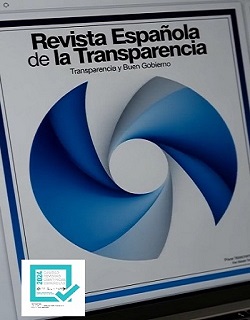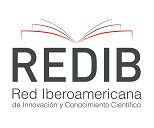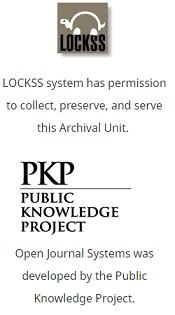Las causas de la opacidad en los gobiernos municipales en México
DOI:
https://doi.org/10.51915/ret.400Palabras clave:
opacidad administrativa, calidad de la información, rendición de cuentas, corrupciónResumen
Si las políticas de transparencia son una herramienta eficaz para combatir la corrupción sigue siendo un tema de debate. Algunos académicos han argumentado que poner la información a disposición del público no es suficiente para lograr una transparencia efectiva. Su efectividad está moderada, entre otros factores, por la forma en que los funcionarios públicos generan y almacenan la información. Con base en un estudio cualitativo, este artículo describe cómo surgen ciertas prácticas que producen opacidad y, en última instancia, disminuyen el valor de la información dentro de los gobiernos municipales en México. En primer lugar, se discute el concepto de opacidad y sus implicaciones para la rendición de cuentas y los esfuerzos anticorrupción. Luego, el artículo expone las causas de la opacidad en los gobiernos municipales, describiendo específicamente cuatro tipos de tácticas utilizadas por los funcionarios públicos para generar opacidad y tres condiciones institucionales que la posibilitan. Finalmente, el artículo presenta varias consideraciones para abordar y reducir la opacidad.
Descargas
Estadísticas globales ℹ️
|
0
Visualizaciones
|
0
Descargas
|
|
0
Total
|
|
Citas
ALT, J.E.; LASSEN, D.D. y SKILLING, D. 2002. “Fiscal transparency, gubernatorial approval, and the scale of government: Evidence from the states”, State Politics & Policy Quarterly, vol. 2(3):230-250.
ANANNY, M. y CRAWFORD, K. 2018. “Seeing without knowing: Limitations of the transparency ideal and its application to algorithmic accountability”, New Media & Society, vol. 20(3):973-989.
BANNISTER, F. y CONNOLLY, R. 2011. “The trouble with transparency: a critical review of openness in e-government”, Policy & Internet, vol. 3(1):1-30.
BAUHR, M. y CARLITZ, R. 2021. “When does transparency improve public services? Street-level discretion, information, and targeting”, Public Administration, vol. 99(3):500-516.
BAUHR, M.; CZIBIK, Á.; DE FINE LICHT, J. y FAZEKAS, M. 2020. “Lights on the shadows of public procurement: Transparency as an antidote to corruption”, Governance, vol. 33(3):495-523.
BAUHR, M. y NASIRITOUSI, N. 2012. “Resisting transparency: Corruption, legitimacy, and the quality of global environmental policies”, Global Environmental Politics, vol. 12(4):9-29.
BERTOT, J.C.; JAEGER, P.T. y GRIMES, J.M. 2010. “Using ICTs to create a culture of transparency: E-government and social media as openness and anti-corruption tools for societies”, Government Information Quarterly, vol. 27(3):264-271.
BRUNETTI, A. y WEDER, B. 2003. “A free press is bad news for corruption”, Journal of Public Economics, vol. 87(7-8):1801-1824.
CORBIN, J.M. y STRAUSS, A. 1990. “Grounded theory research: Procedures, canons, and evaluative criteria”, Qualitative Sociology, vol. 13(1):3-21.
CUCCINIELLO, M.; PORUMBESCU, G.A. y GRIMMELIKHUIJSEN, S. 2017. “25 years of transparency research: Evidence and future directions”, Public Administration Review, vol. 77(1):32-44.
DAWES, S.S. 2010. “Stewardship and usefulness: Policy principles for information-based transparency”, Government Information Quarterly, vol. 27(4):377-383.
DORN, N.; LEVI, M. y WHITE, S. 2008. “Do European procurement rules generate or prevent crime?”, Journal of Financial Crime.
EDMONDSON, A.C. y MCMANUS, S.E. 2007. “Methodological fit in management field research”, Academy of Management Review, vol. 32(4):1246-1264.
EMERSON, R.M.; FRETZ, R.I. y SHAW, L.L. 1995. Writing ethnographic fieldnotes. Chicago: University of Chicago Press.
FELDMAN, M.S. y MARCH, J.G. 1981. “Information in organizations as signal and symbol”, Administrative Science Quarterly, núm. 26(2):171-186.
FENSTER, M. 2005. “The opacity of transparency”, Iowa Law Review, vol. 91:885.
FLORINI, A. 2007. The right to know: Transparency for an open world. New York: Columbia University Press.
FOX, J. 2007. “The uncertain relationship between transparency and accountability”, Development in Practice, vol. 17(4-5):663-671.
GARUD, R. y RAPPA, M.A. 1994. “A socio-cognitive model of technology evolution: The case of cochlear implants”, Organization Science, vol. 5(3):344-362.
GASSER, L. 1986. “The integration of computing and routine work”, ACM Transactions on Information Systems, vol. 4(3):205-225.
GLASER, B.G. y STRAUSS, A.L. 1967. The discovery of grounded theory: Strategies for qualitative research. Chicago: Aldine.
GRIMMELIKHUIJSEN, S. 2012. “A good man but a bad wizard. About the limits and future of transparency of democratic governments”, Information Polity, vol. 17(3-4):293-302.
HARRISON, T.M. y SAYOGO, D.S. 2014. “Transparency, participation, and accountability practices in open government: A comparative study”, Government Information Quarterly, vol. 31(4):513-525.
HEALD, D.A. 2006. “Varieties of transparency”, en HOOD, C. y HEALD, D.A. (eds.), Transparency: The key to better governance? Oxford: Oxford University Press, pp. 25-43.
HOOD, C. y HEALD, D.A. (eds.) 2006. Transparency: The key to better governance? Oxford: Oxford University Press.
KOLSTAD, I. y WIIG, A. 2009. “Is transparency the key to reducing corruption in resource-rich countries?”, World Development, vol. 37(3):521-532.
MARGETTS, H. 2006. “Transparency and digital government”, Proceedings of the British Academy, vol. 1:197-210.
MEIJER, A. 2009. “Understanding modern transparency”, International Review of Administrative Sciences, vol. 75(2):255-269.
MEIJER, A. 2013. “Understanding the complex dynamics of transparency”, Public Administration Review, vol. 73(3):429-439.
MEZA, O. y PÉREZ-CHIQUÉS, E. 2021. “Corruption consolidation in local governments: A grounded analytical framework”, Public Administration, vol. 99(3):530-546.
MICHENER, G. y BERSCH, K. 2013. “Identifying transparency”, Information Polity, vol. 18(3):233-242.
ORLIKOWSKI, W.J. 2000. “Using technology and constituting structures: A practice lens for studying technology in organizations”, Organization Science, vol. 11(4):404-428.
PÉREZ-CHIQUÉS, E. y MEZA, O. 2021. “Trust-based corruption networks: A comparative analysis of two municipal governments”, Governance, vol. 34(4):1039-1056.
PINCH, T.J. y BIJKER, W.E. 1984. “The social construction of facts and artefacts: Or how the sociology of science and the sociology of technology might benefit each other”, Social Studies of Science, vol. 14(3):399-441.
PRAT, A. 2006. “The more closely we are watched, the better we behave?”, en HOOD, C. y HEALD, D.A. (eds.), Transparency: The key to better governance? Oxford: Oxford University Press, pp. 91.
ROBERTS, A. 2006. Blacked out: Government secrecy in the information age. Cambridge: Cambridge University Press.
SPRADLEY, J.P. 1979. The ethnographic interview. New York: Holt, Rinehart and Winston.
STOHL, C.; STOHL, M. y LEONARDI, P.M. 2016. “Managing opacity: Information visibility and the paradox of transparency in the digital age”, International Journal of Communication, vol. 10:15.
VENARD, B. y TSHERING, K. 2021. “Barriers to transparency in Bhutan’s public administration: A new typology of opacity”, Public Administration and Development, vol. 41(4):203-216.
WEITZ-SHAPIRO, R. y WINTERS, M.S. 2017. “Can citizens discern? Information credibility, political sophistication, and the punishment of corruption in Brazil”, The Journal of Politics, vol. 79(1):60-74.
WINTERS, M.S. y WEITZ-SHAPIRO, R. 2013. “Lacking information or condoning corruption: When do voters support corrupt politicians?”, Comparative Politics, vol. 45(4):418-436.
Descargas
Publicado
Cómo citar
Número
Sección
Licencia
Derechos de autor 2025 Revista Española de la Transparencia

Esta obra está bajo una licencia internacional Creative Commons Atribución-CompartirIgual 4.0.
La Revista Española de la Transparencia apuesta por el acceso gratuito y uso sin restricciones a su información y recursos digitales. La política de acceso abierto se materializa en:
- Acceso gratuito, libre y universal.
- Los autores y la Revista conceden a cualquier usuario potencial el derecho a utilizar, copiar o distribuir el contenido de manera ilimitada e irrevocable, con la única condición de reconocer la autoría.
- Los documentos electrónicos correspondientes al contenido de la Revista se incluyen en formato digital para permitir su acceso libre.

















